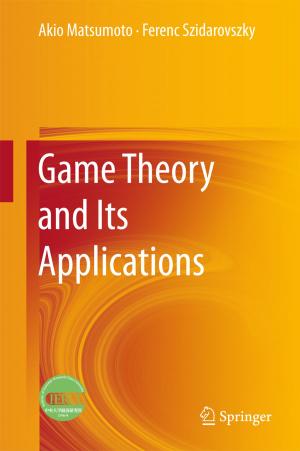Harmonic Analysis on Exponential Solvable Lie Groups
Nonfiction, Science & Nature, Mathematics, Group Theory, Mathematical Analysis| Author: | Hidenori Fujiwara, Jean Ludwig | ISBN: | 9784431552888 |
| Publisher: | Springer Japan | Publication: | December 5, 2014 |
| Imprint: | Springer | Language: | English |
| Author: | Hidenori Fujiwara, Jean Ludwig |
| ISBN: | 9784431552888 |
| Publisher: | Springer Japan |
| Publication: | December 5, 2014 |
| Imprint: | Springer |
| Language: | English |
This book is the first one that brings together recent results on the harmonic analysis of exponential solvable Lie groups. There still are many interesting open problems, and the book contributes to the future progress of this research field. As well, various related topics are presented to motivate young researchers.
The orbit method invented by Kirillov is applied to study basic problems in the analysis on exponential solvable Lie groups. This method tells us that the unitary dual of these groups is realized as the space of their coadjoint orbits. This fact is established using the Mackey theory for induced representations, and that mechanism is explained first. One of the fundamental problems in the representation theory is the irreducible decomposition of induced or restricted representations. Therefore, these decompositions are studied in detail before proceeding to various related problems: the multiplicity formula, Plancherel formulas, intertwining operators, Frobenius reciprocity, and associated algebras of invariant differential operators.
The main reasoning in the proof of the assertions made here is induction, and for this there are not many tools available. Thus a detailed analysis of the objects listed above is difficult even for exponential solvable Lie groups, and it is often assumed that G is nilpotent. To make the situation clearer and future development possible, many concrete examples are provided. Various topics presented in the nilpotent case still have to be studied for solvable Lie groups that are not nilpotent. They all present interesting and important but difficult problems, however, which should be addressed in the near future. Beyond the exponential case, holomorphically induced representations introduced by Auslander and Kostant are needed, and for that reason they are included in this book.
This book is the first one that brings together recent results on the harmonic analysis of exponential solvable Lie groups. There still are many interesting open problems, and the book contributes to the future progress of this research field. As well, various related topics are presented to motivate young researchers.
The orbit method invented by Kirillov is applied to study basic problems in the analysis on exponential solvable Lie groups. This method tells us that the unitary dual of these groups is realized as the space of their coadjoint orbits. This fact is established using the Mackey theory for induced representations, and that mechanism is explained first. One of the fundamental problems in the representation theory is the irreducible decomposition of induced or restricted representations. Therefore, these decompositions are studied in detail before proceeding to various related problems: the multiplicity formula, Plancherel formulas, intertwining operators, Frobenius reciprocity, and associated algebras of invariant differential operators.
The main reasoning in the proof of the assertions made here is induction, and for this there are not many tools available. Thus a detailed analysis of the objects listed above is difficult even for exponential solvable Lie groups, and it is often assumed that G is nilpotent. To make the situation clearer and future development possible, many concrete examples are provided. Various topics presented in the nilpotent case still have to be studied for solvable Lie groups that are not nilpotent. They all present interesting and important but difficult problems, however, which should be addressed in the near future. Beyond the exponential case, holomorphically induced representations introduced by Auslander and Kostant are needed, and for that reason they are included in this book.















